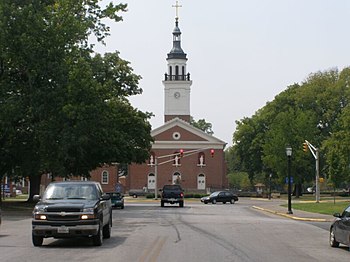 |
| English: Front of the former library (now a parish hall) for St. Francis Xavier Catholic Church, located along Church Street in Vincennes, , . Built in 1840, it is part of the . The complex is listed on the , and it is part of a Register-listed historic district, the . (Photo credit: Wikipedia) |
 |
| Pierre Gibault (Photo credit: Wikipedia) |
In 18th century Indiana , to talk of European presence was to have a
conversation about the French military trading post known as the village of Vincennes
Many visitors to the village were pretty negative about it
inhabitants, saying they were self-indulgent, ill kept , and had questionable
morals.
Father Pierre Gibault visited Vincennes
Father Gibault stayed in the village of Catholic Canada did not
send a priest on a permanent basis to minister to the French settler of Vincennes
 |
| English: Oldest Cathedral in the U.S. (Vincennes, Indiana) (Photo credit: Wikipedia) |
There were a few slaves present in Vincennes
According to St. Francis Xavier Parish records they were
legally married slaves belonging to the Jesuit Fathers. Their daughter was
baptized by a Jesuit father on May 30, 1753. Her name was Agatha. Seven years
passed and a visiting Priest then baptized a slave child named Suzanne who was
owned by a M. Crepau. Later that day she married another slave named Joseph.
Fourteen months later a visiting priest baptized their daughter who was named
after her mother. There were no other church sacraments given to slave from
1763 to 1785 because there were no priest in residence and only times of short
visits. Father Gibault was finally given permission to minister in Vincennes
In regards to the Catholic Church in Vincennes



No comments:
Post a Comment